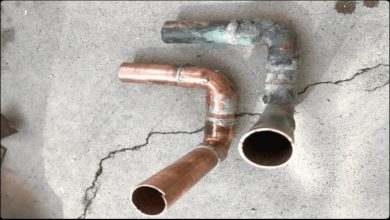Restoring Homes And Peace Of Mind: Water Damage Services

Key Takeaways:
- Water damage can have far-reaching consequences, including mold growth and weakened structural integrity.
- Common sources of water damage include plumbing leaks, roof leaks, natural disasters, and appliance malfunctions.
- Signs of water damage include water stains, musty odors, warped flooring, mold growth, damp drywall, and puddles of water.
- Timely water damage restoration helps prevent further damage and minimize health risks.
- Professional restoration companies have the expertise, equipment, and resources to handle water damage efficiently.
- Prompt restoration minimizes health risks associated with mold growth.
- Effective water damage restoration techniques involve assessing the extent of damage, drying and dehumidification, and restorative cleaning and sanitization.
- When selecting a restoration company, consider their reputation, responsiveness, availability, experience, expertise, licensing, and insurance.
1. Understanding the Impact of Water Damage
Water damage is a common and often devastating problem that homeowners face. Whether it’s due to a burst pipe, a leaking roof, or a natural disaster, the consequences of water damage can be far-reaching. Understanding the impact of water damage is crucial in order to address the issue promptly and effectively.
1.1 The Hidden Dangers of Water Damage
While visible signs of water damage, such as damp walls or standing water, are easy to identify, there are also hidden dangers that may not be immediately apparent. One of the most concerning aspects of water damage is the potential for mold growth. Mold thrives in moist environments and can quickly spread, causing not only structural damage but also health issues for the occupants of the affected property.
In addition to mold, water damage can also lead to weakened structural integrity. Excessive moisture can weaken wooden beams, drywall, and other building materials, jeopardizing the stability of the entire structure. This hidden damage can be costly to repair if not addressed promptly.
1.2 Common Sources of Water Damage
Water damage can occur in various ways, and it’s important to be aware of the common sources to prevent or mitigate potential damage. Some of the most common sources of water damage include:
- Plumbing leaks: Burst pipes, leaking faucets, or faulty plumbing can lead to significant water damage.
- Roof leaks: A damaged or poorly maintained roof can allow water to seep into the interior of a home.
- Natural disasters: Flooding caused by heavy rainstorms, hurricanes, or melting snow can result in extensive water damage.
- Appliance malfunctions: Malfunctioning washing machines, dishwashers, or water heaters can cause water damage if not addressed promptly.
1.3 Recognizing the Signs of Water Damage
Recognizing the early signs of water damage is crucial in order to take immediate action. Some common signs of water damage include:
- Water stains or discoloration on walls, ceilings, or floors
- Musty or unusual odors
- Warped or buckled flooring
- Persistent mold growth
- Damp or wet drywall
- Puddles of water
If any of these signs are present, it’s important to investigate the source of the water and take steps to address the issue as soon as possible.
2. The Importance of Timely Water Damage Restoration
When faced with water damage, time is of the essence. Taking immediate action to restore the affected areas can help prevent further damage and minimize health risks.
2.1 Preventing Further Damage with Quick Action
Water damage, if left untreated, can quickly escalate and cause further destruction to the property. As mentioned earlier, prolonged exposure to moisture can weaken the structural integrity of a building, leading to more extensive and costly repairs.
By promptly addressing the water damage and implementing restoration measures, homeowners can prevent further damage and save themselves from costly repairs down the line.
2.2 The Benefits of Professional Water Damage Restoration
While it may be tempting to tackle water damage restoration as a DIY project, enlisting the help of professionals offers several benefits. Professional water damage services in North Georgia have the expertise, equipment, and resources to handle the restoration process efficiently and effectively.
These professionals undergo specialized training and have experience in dealing with various types and scales of water damage. They have access to advanced equipment, such as industrial-grade dehumidifiers and moisture meters, which can help in thoroughly drying the affected areas. Furthermore, they can also provide guidance on necessary repairs and work with insurance companies to streamline the claims process.
2.3 Minimizing Health Risks through Prompt Restoration
One of the most significant risks of water damage is the potential for mold growth. Mold can trigger allergies, respiratory problems, and other health issues, especially in individuals with compromised immune systems or pre-existing respiratory conditions.
By addressing the water damage promptly and implementing appropriate restoration techniques, the risk of mold growth can be minimized. Professionals can thoroughly dry the affected areas, removing moisture and creating an environment where mold is less likely to thrive, thus safeguarding the health of the occupants.
3. Effective Water Damage Restoration Techniques
Effective water damage restoration involves a systematic approach that aims to restore the affected areas to their pre-damage condition. The restoration process typically includes the following techniques:
3.1 Assessing the Extent of Water Damage
Before starting the restoration process, professionals assess the extent of the water damage to determine the appropriate course of action. This assessment involves identifying the source of the water, categorizing the water damage (such as clean water, gray water, or black water), and evaluating the affected areas.
By conducting a thorough assessment, professionals can develop a comprehensive restoration plan tailored to the specific needs of the property.
3.2 Drying and Dehumidification for Complete Water Removal
Thorough drying and dehumidification are crucial steps in the water damage restoration process. Professionals use industrial-grade dehumidifiers and specialized drying equipment to remove excess moisture and prevent mold growth.
This step may also involve the removal of damaged materials that cannot be salvaged, such as saturated carpets or irreparably damaged drywall. By ensuring complete water removal and thorough drying, professionals can mitigate further damage and create an environment that discourages mold growth.
3.3 Restorative Cleaning and Sanitization Processes
Once the affected areas are thoroughly dry, professionals proceed with restorative cleaning and sanitization. This step involves the removal of any remaining debris or contaminants and the disinfection of surfaces to ensure a safe and healthy environment.
Professional restoration companies use specialized cleaning products and techniques to effectively remove any residual mold spores or bacteria. This step not only restores the appearance of the affected areas but also eliminates any potential health hazards.
4. Choosing the Right Water Damage Service in North Georgia
When dealing with water damage, it’s important to choose the right restoration company to ensure a successful and efficient restoration process. Consider the following factors when selecting a water damage service in North Georgia:
4.1 Key Factors to Consider when Selecting a Restoration Company
When selecting a water damage restoration company, it’s essential to consider their reputation, responsiveness, and availability. Look for a company with positive customer reviews, as this indicates their track record of customer satisfaction.
Additionally, choose a company that provides 24/7 emergency services, as water damage can occur at any time, and immediate action is crucial to minimize the damage.
4.2 Evaluating the Experience and Expertise of Restoration Professionals
Experience and expertise play a crucial role in the effectiveness of the restoration process. Look for a company with a team of trained and certified professionals who have extensive experience in handling water damage restoration.
Ask about the certifications and training programs the professionals have completed, as this demonstrates their knowledge and commitment to staying up-to-date with industry standards and best practices.
4.3 Understanding the Importance of Licensing and Insurance
Ensure that the restoration company you choose is properly licensed and insured. Licensing ensures that the company meets the necessary requirements and adheres to industry regulations.
Insurance coverage protects both the restoration company and the homeowner in the event of any accidents or damages that may occur during the restoration process.
In conclusion, water damage can have far-reaching consequences on both the structural integrity and the health of a property. It is essential to act promptly and engage the services of professional water damage restoration companies to ensure thorough and effective restoration. By understanding the impact of water damage, recognizing the signs, and taking quick action, homeowners can protect their homes and restore their peace of mind.
FAQ
Question: What are the hidden dangers of water damage? – Water damage can lead to mold growth and weakened structural integrity, posing health risks and potential costly repairs.
Question: What are the common sources of water damage? – Common sources include plumbing leaks, roof leaks, natural disasters, and appliance malfunctions.
Question: How can I recognize the signs of water damage? – Look for water stains, musty odors, warped flooring, mold growth, damp drywall, and puddles of water.
Question: Why is timely water damage restoration important? – Prompt restoration prevents further damage and reduces health risks associated with mold growth.
Question: What are the benefits of professional water damage restoration? – Professionals have expertise, equipment, and resources to handle restoration efficiently. They can also provide guidance and work with insurance companies.
Question: How can I minimize health risks through prompt restoration? – Addressing water damage promptly and implementing restoration techniques can reduce the risk of mold growth.
Question: What are the effective water damage restoration techniques? – The restoration process includes assessing the extent of damage, drying and dehumidification, and restorative cleaning and sanitization.
Question: What factors should I consider when selecting a water damage service? – Consider reputation, responsiveness, availability, experience, expertise, licensing, and insurance of the restoration company.
Useful Resources:
- Water Damage Defense
- Environmental Protection Agency (EPA) – Mold Resources
- Federal Emergency Management Agency (FEMA) – Mitigation Resources
- Institute of Inspection, Cleaning and Restoration Certification (IICRC)
- U.S. Green Building Council – Leadership in Energy and Environmental Design (LEED)
- National Fire Protection Association (NFPA) – Fire Safety Tips and Resources
- International Code Council (ICC)
- Insurance Information Institute (III) – How to File a Hurricane Insurance Claim



